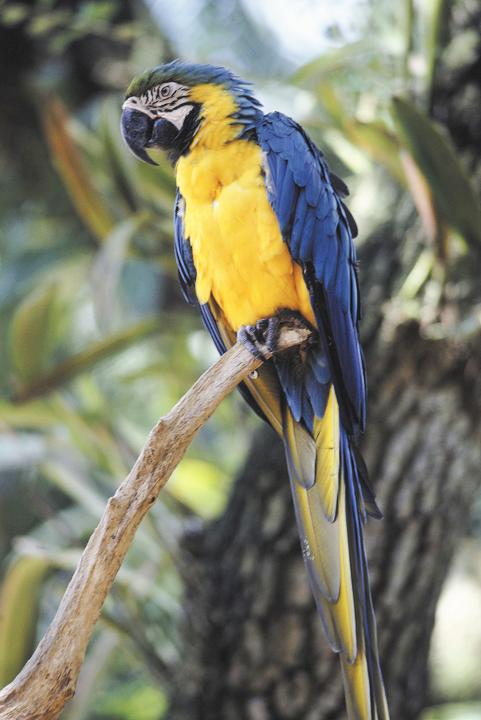 |
Canku Ota
|
 |
|
(Many Paths)
|
||
|
An Online Newsletter
Celebrating Native America
|
||
|
July 2021 - Volume 19
Number 7
|
||
|
|
||
|
Macaw
|
||
|
by Britannica
|
||
Both male and female macaws look alike, which is uncommon among vividly coloured birds. The cobalt-blue hyacinth macaw (Anodorhynchus hyacinthinus) of Brazil, Bolivia, and Paraguay is the largest of all parrots, measuring 95–100 cm (37.5–39.5 inches) long. The scarlet macaw (Ara macao) is probably the best-known New World parrot. Its brilliant red, yellow, and blue plumage contrasts with a bare white face that may blush when the bird is excited. Flying with distinctive slow wingbeats and their long tails trailing, scarlet macaws are most often seen flying to and from roosting and feeding sites in pairs, family groups, or flocks. These gregarious birds can often be heard calling in flight, emitting loud metallic screeches. With their large sickle-shaped beaks, macaws can crack open hard-shelled seeds and nuts, dislodging the nutmeat with their blunt muscular tongues. The beak also serves as a third foot as the macaw climbs about in trees searching for seeds, as well as fruits, flowers, and leaves. One species, the blue-and-yellow macaw (Ara ararauna), has been recorded eating at least 20 species of plants, including many toxic to humans. In Manú National Park in Peru, the members of five macaw species converge by the hundreds at mineral-rich riverbanks to eat the clay there, which may help them detoxify compounds in their diet. Macaws nest in tree hollows; hyacinth macaws sometimes nest in riverbank holes.
Macaws are easily tamed, and some can mimic sounds. Although these parrots often shriek noisily, gnaw, and occasionally bite with their powerful beaks, many local people keep them as pets. A few macaws have survived to 65 years old in captivity.
Macaws are also exported, often illegally, to supply the worldwide pet trade. This practice, along with land clearing and logging, has contributed to many macaws’ (as well as other parrots’) increasing rarity in the wild. The IUCN Red List of Threatened Species lists several macaws as either endangered or critically endangered. Species at the greatest risk of extinction include the blue-throated macaw (Ara glaucogularis) of northern Bolivia, the great green macaw (Ara ambiguus) of northern Colombia and Central America, and Lear’s macaw (Anodorhynchus leari) of Brazil. The most recent confirmed sighting of a non-captive Spix’s macaw (Cyanopsitta spixii)—the bird that inspired the popular children’s films Rio (2011) and Rio 2 (2014)—occurred in 2000, and the International Union for Conservation of Nature (IUCN) and other authorities considered the species extinct in the wild by 2018. In addition, ornithologists hold out hope that small populations of the glaucous macaw (Anodorhynchus glaucus), which has been listed by the IUCN as a critically endangered species since 2000, continue to persist; the species was last observed in central South America in the 1960s, and several unconfirmed sightings of individuals have been reported since then. |
||||||
|
|
|
||
|
|
||
| Canku Ota is a free Newsletter celebrating Native America, its traditions and accomplishments . We do not provide subscriber or visitor names to anyone. Some articles presented in Canku Ota may contain copyright material. We have received appropriate permissions for republishing any articles. Material appearing here is distributed without profit or monetary gain to those who have expressed an interest. This is in accordance with Title 17 U.S.C. Section 107. | ||
|
Canku Ota is a copyright ©
2000 - 2021 of Vicki Williams Barry and Paul Barry.
|
||
 |
 |
|
|
The "Canku
Ota - A Newsletter Celebrating Native America" web site and
its design is the
|
||
|
Copyright ©
1999 - 2021 of Paul C. Barry.
|
||
|
All Rights Reserved.
|
||



